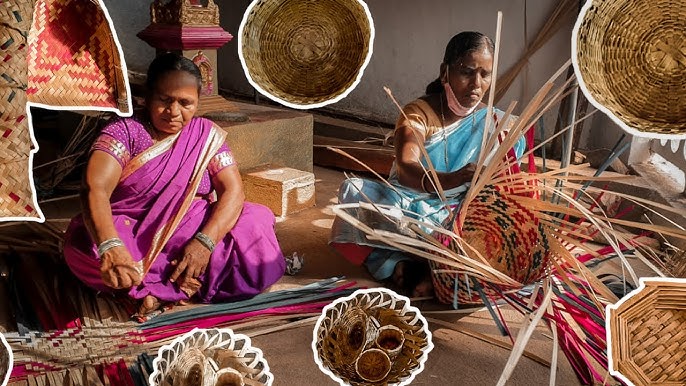Beyond Beaches: Goa’s Craft Clusters Powering a Silent Revolution

Event Details
Date: May 26, 2025
Description
Beyond Beaches: Goa’s Craft Clusters Powering a Silent Revolution
Goa is known globally for its scenic beaches, vibrant culture, and rich heritage. But beyond the sun and sand lies an enduring, vibrant economy shaped by its people’s entrepreneurial spirit. At the heart of this economy are the small-scale industries (SSIs) and traditional handicraft sectors — quiet yet powerful contributors that have long supported the livelihoods of thousands of Goans, preserved local culture, and ensured economic stability, especially in times of crisis.
This article provides an in-depth look at the role of small-scale industries and handicrafts in Goa's economic and cultural landscape, the evolution of these sectors, their resilience during the COVID-19 pandemic, and the promising trends that lie ahead.
The Roots of Handicrafts and SSIs in Goa
Goa's handicraft tradition has deep roots in its diverse historical and cultural influences — from the Kadamba dynasty and the Vijayanagara empire to 450 years of Portuguese rule. Each era added layers of craftsmanship, introducing new materials, motifs, and techniques that continue to define Goan handicrafts today.
The state's handicraft sector is known for its variety: coconut shell art, bamboo craft, pottery, brassware, crochet and embroidery, paper-mâché, wood carving, and terracotta. These crafts, passed down through generations, not only preserve heritage but also provide livelihood to thousands of artisans across the state.
Small-scale industries in Goa are closely intertwined with these crafts. Many artisans operate as part of small, family-owned businesses or informal production clusters that manufacture goods in small batches. These industries often lack the scale of large factories, but they make up for it with specialization, craftsmanship, and flexibility.
Economic Backbone of Rural Goa
Small-scale industries and handicrafts are crucial for employment generation in Goa, especially in rural and semi-urban regions. These industries serve as the economic lifeblood of many villages, where formal job opportunities remain limited.
Goa’s SSIs include not just traditional handicrafts but also food processing units, agarbatti production, spice packaging, cashew nut processing, coir product making, and light manufacturing. These enterprises operate in clusters, using locally sourced raw materials and serving local, national, and even international markets.
Their decentralized nature makes them accessible and inclusive. Women, senior citizens, and differently-abled individuals often find dignified work within these sectors, promoting social equity along with economic benefit.
Lessons from the COVID-19 Pandemic
The COVID-19 pandemic was a defining moment for Goa’s economy. The state’s two largest income sources — tourism and high-end service industries — were among the worst hit. With hotels shut, flights cancelled, and events postponed, thousands were left jobless. Yet amid this economic paralysis, small-scale industries and handicrafts emerged as resilient anchors.
Many SSIs continued to function in a limited yet consistent capacity, especially in rural clusters. People returned to their roots — quite literally — engaging in family-owned units or reviving traditional skills. Goan women, in particular, stepped up during this time, reviving crafts such as crochet and tailoring to make cloth masks, home linen, and simple clothing items, which were sold locally and online.
Artisans also used this time to innovate — producing handicrafts that reflected the pandemic experience, such as personalized home decor, eco-friendly lifestyle items, and health-conscious products. Digital platforms and local marketplaces played a key role in connecting these producers to customers even during lockdowns.
This period demonstrated that SSIs and handicrafts were not just fallback options but essential buffers against economic shocks.
Government Support and Institutional Framework
Recognizing the potential of these industries, the Government of Goa — through organizations like the Goa Handicrafts, Rural & Small Scale Industries Development Corporation Ltd. (GHRSSIDC) — has been actively supporting artisans and small entrepreneurs.
Initiatives include:
Organizing exhibitions and trade fairs like Aparant Maand, Gandhi Shilp Bazaar, and participation in the Indian International Trade Fair.
Providing financial assistance, raw material banks, marketing support, and training programs.
Helping artisans form cooperatives or SHGs (Self-Help Groups) for better production and bargaining power.
Facilitating e-commerce onboarding, enabling artisans to reach national and international markets via platforms like Amazon Karigar or state portals.
In addition, various skill development programs, common facility centers, and design innovation workshops have helped artisans modernize their offerings without losing cultural essence.
Trends Shaping the Future
As the global economy becomes more conscious of sustainability, authenticity, and culture-based products, Goa’s handicrafts and SSIs are well-positioned to grow. Some notable trends include:
1. Rise of Sustainable and Eco-Friendly Crafts
With increasing demand for sustainable products, Goan crafts made from coconut shells, bamboo, banana fiber, clay, and recycled materials are gaining traction. Artisans are creating innovative, eco-conscious lifestyle items that appeal to environmentally aware consumers.
2. Digital Transformation
Technology is playing a transformative role. From mobile-based payment systems and digital catalogs to social media marketing and online exhibitions, artisans are using tech to grow their reach. Some SSIs have also adopted tools like CAD for design, enhancing their productivity.
3. Tourism-Craft Integration
As Goa's tourism sector recovers, there is a renewed focus on experiential tourism — where tourists seek cultural and craft experiences. Artisan villages, live craft demonstrations, and handicraft trails are being developed to attract these new-age travelers.
4. Skill Development and Youth Engagement
Young Goans are slowly returning to the sector, encouraged by market demand, government incentives, and the satisfaction of creating value with their hands. Training programs focused on design, digital skills, and business planning are encouraging this transition.
5. Export and Global Visibility
Goa’s handicrafts, once exported mainly via informal routes, are now finding structured avenues for export. Port infrastructure, logistics improvement, and partnerships with export promotion councils are creating new global opportunities.
Challenges That Remain
Despite their significance, SSIs and handicrafts face several challenges:
Access to credit and working capital remains limited.
Lack of brand identity or geographical indication (GI) tagging reduces premium pricing.
Limited design innovation and standardization can affect marketability.
Raw material cost fluctuations and lack of modern machinery hinder scalability.
Addressing these concerns through public-private partnerships, innovation hubs, and better policy alignment is vital for sustained growth.
Way Forward: Empowering Clusters, Encouraging Innovation
For Goa to truly capitalize on its handicraft and SSI potential, a cluster-based development approach is essential. This involves:
Developing craft hubs with shared resources.
Facilitating B2B and B2C linkages with domestic and global buyers.
Encouraging product diversification aligned with modern lifestyle needs.
Promoting Goan crafts through cultural diplomacy and international events.
Additionally, integrating handicrafts into school and college-level vocational education, offering tax incentives, and building artisan-friendly e-commerce infrastructure will go a long way in sustaining this sector.
Conclusion
The story of Goa’s handicrafts and small-scale industries is one of resilience, culture, and quiet innovation. While the world may remember Goa for its beaches and nightlife, it is these micro-industries and artisans — working from homes, huts, and small clusters — who kept the state's economic engine running when larger players shut down.
As we move ahead in a post-pandemic world that values sustainability, inclusivity, and cultural authenticity, Goa’s SSIs and handicrafts are no longer just surviving — they are poised to thrive.
Supporting this sector is not merely a matter of economic policy; it is a commitment to preserving Goa’s identity, empowering its people, and crafting a future that values both heritage and innovation.

